Guide To Firewood 2025
- September 12, 2023
- 0 comment
There’s something inherently comforting about the crackling sound and warm glow of a wood fire. Firewood has been a source of heat and comfort for centuries, and its benefits extend beyond mere aesthetics. In this article, we will explore the various aspects of firewood, including its benefits, the best types for heat, how to store and split it, cost considerations, its use in wood ovens, proper drying techniques, and tips for wood stoves and fireplaces.
Benefits of Burning Firewood

- Economical Heating: Firewood is a cost-effective way to heat your home, especially if you have access to a sustainable source of wood. It can significantly reduce your energy bills during the colder months.
- Renewable Resource: Firewood is a sustainable and renewable source of heat, making it an eco-friendly choice when harvested responsibly.
- Ambiance and Aesthetics: The warm and inviting ambiance created by a wood-burning fireplace or stove adds charm and comfort to any living space.
- Independence: Using firewood gives you greater energy independence, as you’re not reliant on electricity or gas for heating.
Excited to take your understanding to the next level? Don’t miss the chance to uncover more in this article—check it out here! Benefits of Burning Firewood 2023
Best Firewood for Heat
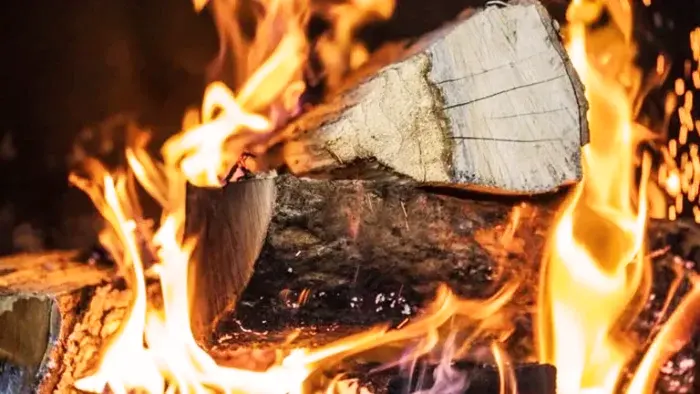
When selecting firewood for maximum heat output, it’s essential to consider the wood’s density and energy content. Hardwoods, such as oak, maple, and hickory, are known for their high energy content and slow-burning properties, making them ideal choices for heating. Softwoods, like pine and spruce, burn faster and are better suited for kindling or shorter fires.
Excited to take your understanding to the next level? Don’t miss the chance to uncover more in this article—check it out here! Best Firewood for Heat 2023
Wood Types and Their Heat Output
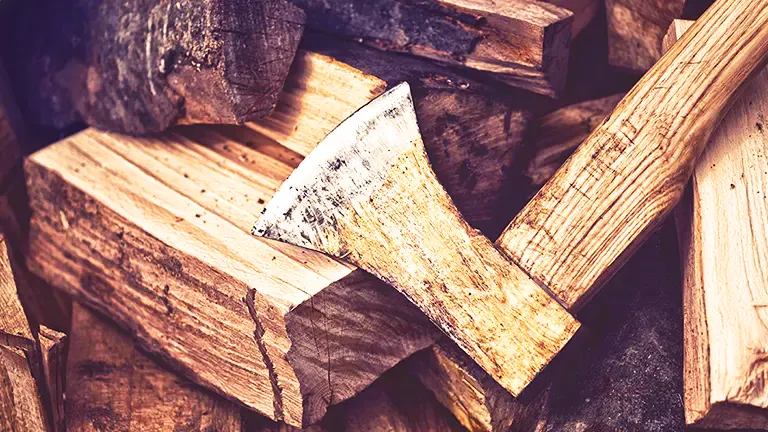
Different types of wood have varying heat outputs due to differences in density and moisture content. Here are some examples:
- Oak: Oak is renowned for its high heat output and long burn times. It’s a top choice for heating.
- Maple: Maple is another hardwood that burns hot and steadily.
- Hickory: Hickory is famous for its intense heat and excellent aroma when burned.
- Pine: Pine is a softwood that burns quickly and is great for kindling, but it produces less heat than hardwoods.
Excited to take your understanding to the next level? Don’t miss the chance to uncover more in this article—check it out here! Firwood Types and Their Heat Output 2023
How to Store Firewood
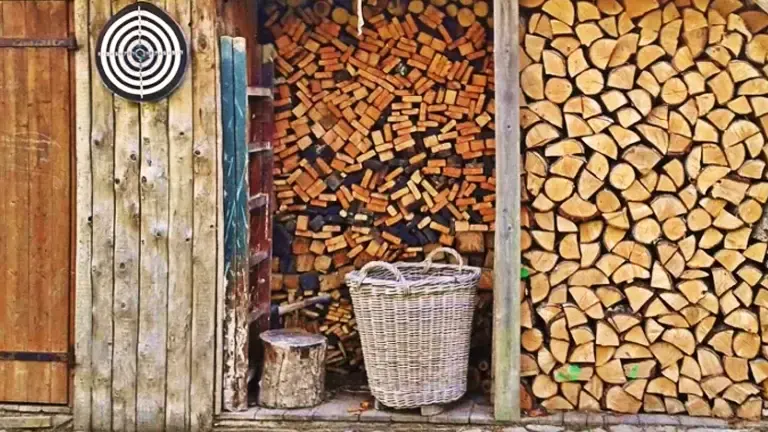
Properly storing firewood is crucial to maintain its quality and prevent moisture buildup. Here’s how:
- Elevate: Stack firewood off the ground to prevent moisture absorption.
- Cover: Use a tarp or firewood rack with a cover to protect wood from rain and snow.
- Air Circulation: Allow air to circulate through the woodpile to aid in drying.
- Seasoning: Season wood for at least 6-12 months to reduce moisture content to around 20%.
Excited to take your understanding to the next level? Don’t miss the chance to uncover more in this article—check it out here! How to Store Firewood 2023
How to Split Firewood
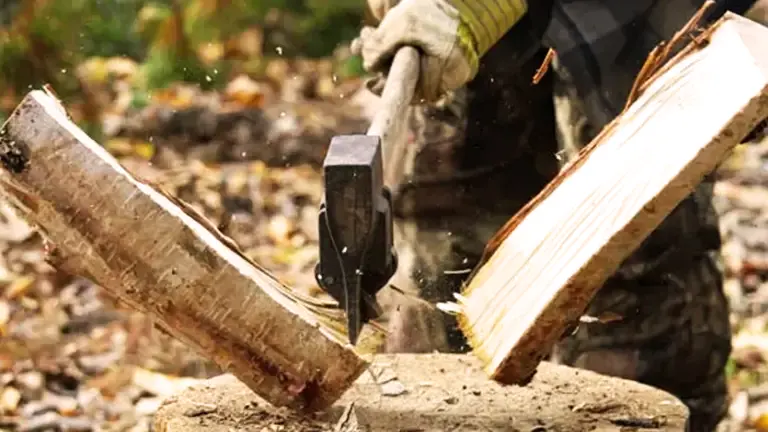
Splitting firewood is a crucial step in preparing it for burning. Properly split firewood burns more efficiently and is easier to handle. Here’s a more detailed guide on how to split firewood:
- Safety First: Before you start splitting firewood, ensure you have the right safety equipment. This includes wearing safety goggles to protect your eyes from flying wood chips and using steel-toed boots to shield your feet.
- Select the Right Tools: The two most common tools for splitting firewood are a maul and an axe. A maul has a heavier, wedge-shaped head designed for splitting, while an axe has a thinner, sharpened blade better suited for chopping. Choose the tool that suits your strengths and experience.
- Position the Wood: Place the log you want to split on a sturdy chopping block or a similar solid surface. Make sure the log is stable and won’t roll or move while you’re splitting it.
- Focus on the Grain: Study the log and identify the direction of the grain. It’s easier to split wood along the grain, so position the log accordingly.
- Use Proper Technique: Stand with your feet shoulder-width apart and your dominant hand on the handle of the maul or axe. Raise the tool over your shoulder and bring it down forcefully, aiming for the center of the log. Keep your non-dominant hand out of the way and clear of the striking zone.
- Follow Through: Allow the tool to follow through the log after the initial strike. This will help ensure a clean and complete split.
- Splitting Logs into Smaller Pieces: For larger logs, it’s often necessary to split them further into smaller pieces. Repeat the process, focusing on splitting along the grain until you have manageable-sized pieces for your fireplace or wood stove.
Excited to take your understanding to the next level? Don’t miss the chance to uncover more in this article—check it out here! How to Split Firewood 2023
Cost of Firewood
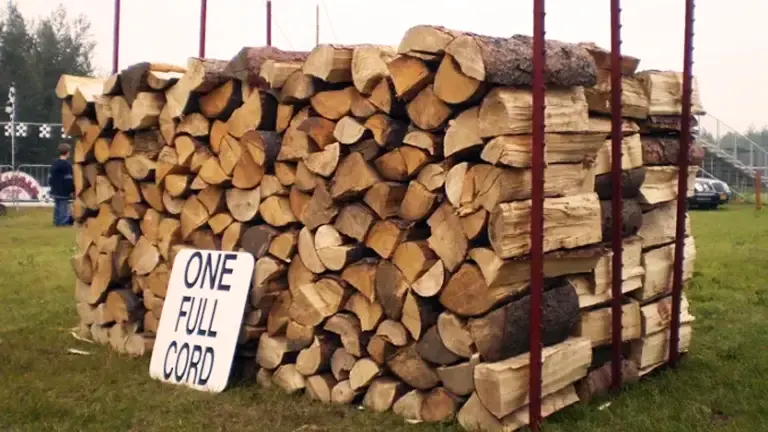
The cost of firewood can vary widely based on several factors. Here’s a more detailed look at what can influence the cost of firewood:
- Location: Firewood prices are often influenced by your geographical location. In rural areas with abundant access to wood, prices may be lower than in urban areas.
- Type of Wood: Different types of wood command different prices. Hardwood varieties like oak and maple are typically more expensive due to their higher energy content.
- Seasoning and Quality: Well-seasoned firewood is more expensive than green or freshly cut wood. However, it’s a better investment as it burns more efficiently.
- Quantity: Buying firewood in bulk can lead to cost savings compared to purchasing smaller quantities.
- Delivery Costs: If you don’t have the means to transport firewood yourself, factor in the cost of delivery when calculating the overall expense.
Excited to take your understanding to the next level? Don’t miss the chance to uncover more in this article—check it out here! Cost of Firewood 2023
Best Firewood for Wood Ovens
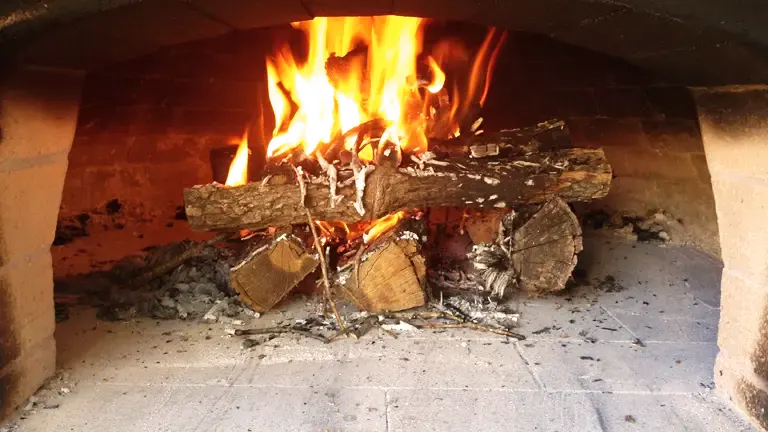
Wood ovens require specific types of firewood to function efficiently and produce the best results in cooking. Here are some additional details about selecting the best firewood for wood ovens:
- Hardwoods Are Ideal: Hardwoods like oak, hickory, and maple are excellent choices for wood-fired ovens. They produce a consistent, high heat and impart a pleasant flavor to your food.
- Low Moisture Content: Wood for wood ovens should have a low moisture content (around 20%) to prevent excessive smoke and soot buildup.
- Aromatic Woods: Consider adding aromatic woods like apple or cherry for a unique flavor profile when baking or roasting.
Excited to take your understanding to the next level? Don’t miss the chance to uncover more in this article—check it out here! Best Firewood for Wood Ovens 2023
How to Dry Firewood
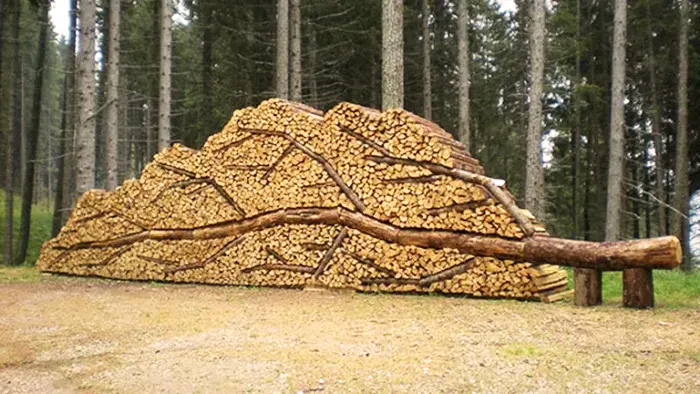
Properly drying firewood is essential to ensure it burns efficiently and cleanly. Here’s a more detailed guide on how to dry firewood:
- Splitting and Stacking: As mentioned earlier, start by splitting the wood into smaller pieces to expose more surface area. Stack the split wood in a single row or in a woodpile, ensuring it’s off the ground and exposed to air.
- Air Circulation: Allow for adequate air circulation within the woodpile. Stacking the wood loosely or using spacers between logs can help with this.
- Covering the Top: While you want air to circulate through the sides of the woodpile, cover the top with a tarp or firewood rack cover to protect the wood from rain and snow. Leave the sides open to promote ventilation.
- Patience: Drying wood takes time, typically 6-12 months or longer, depending on the wood type and climate. Check the moisture content with a moisture meter to ensure it’s around 20% before burning.
Excited to take your understanding to the next level? Don’t miss the chance to uncover more in this article—check it out here! How to Dry Firewood 2023
Wood Stoves and Fireplaces
Wood-burning stoves and fireplaces are popular choices for heating homes. Here are some additional tips for using and maintaining these appliances:
- Regular Cleaning: Clean your wood stove or fireplace regularly to remove ash and creosote buildup. Creosote is a flammable substance that can lead to chimney fires.
- Proper Venting: Ensure that your wood stove or fireplace is vented correctly to prevent smoke from entering your home. Consult a professional if you’re unsure about the installation.
- Safe Storage: Store your firewood away from the home to prevent pests like termites from infesting your living space.
Excited to take your understanding to the next level? Don’t miss the chance to uncover more in this article—check it out here! Wood Stove Articles and Fireplace Articles
Troubleshooting Firewood
If you encounter issues while burning firewood, it’s essential to troubleshoot and address them promptly. Here are some common problems and their solutions:
- Difficulty Lighting a Fire: If you’re struggling to light a fire, your wood may be too wet or green. Use dry, well-seasoned wood, or consider using kindling and fire starters.
- Excessive Smoke: Excessive smoke can be caused by wet or unseasoned wood. Ensure your wood is properly dried before use, and maintain good airflow in your stove or fireplace.
- Poor Draft: If your wood stove or fireplace isn’t drawing well, it may need a chimney cleaning or inspection. Blocked or partially obstructed chimneys can hinder proper airflow.
- Uneven Burning: Uneven burning can result from inconsistent wood size or stacking. Ensure that your firewood is of uniform size and that you stack it properly to promote even combustion.
Conclusion
In conclusion, firewood is not just a source of heat; it’s a versatile and cost-effective solution that adds warmth and charm to your home. By following these detailed guidelines on splitting, storing, selecting, and using firewood, you can enjoy a cozy and efficient heating experience while avoiding common pitfalls and troubleshooting issues that may arise during the process. Whether you’re using firewood in a wood stove, fireplace, or wood oven, the key is to ensure your wood is dry, well-maintained, and suitable for your specific heating needs.
FAQs
- Why do some people refer to firewood as “nature’s battery”?
Firewood stores the energy from the sun that trees have captured through photosynthesis. When burned, this energy is released in the form of heat, similar to how a battery releases stored energy. - Can firewood have terroir, similar to wine?
Just as soil and climate affect the taste of wine, the environment in which a tree grows can influence the aroma, burn quality, and even the color of the flame of the firewood. - Why do some logs “sing” or “whistle” as they burn?
This is due to the moisture and resin channels inside the wood. As the wood heats, water turns into steam and escapes, sometimes creating a whistling sound. - Is it true that some cultures believe in the spiritual significance of burning specific types of wood?
Yes, some indigenous and ancient cultures believe different woods invite specific energies or spirits when burned. - How does moon phase wood cutting work, and is there any scientific basis for it?
Some traditions, especially in Europe, believe that wood cut during certain moon phases is less susceptible to decay and pests. However, modern science hasn’t provided definitive proof of this claim. - Why do hardwoods produce longer-lasting fires than softwoods?
Hardwoods are denser and have a more complex cellular structure than softwoods, causing them to burn longer and produce more coals. - Is there a “perfect” moisture content for firewood?
Ideally, firewood should have a moisture content of 15-20% for optimal burning. Too wet, and it will produce excessive smoke; too dry, and it may burn too quickly. - Can burning certain woods actually flavor the foods you cook over them?
Absolutely! Woods like apple, cherry, hickory, and mesquite impart distinct flavors to foods, which is why they’re often chosen for smoking meats. - Why does firewood sometimes “pop” in the fireplace?
The “popping” sound is often caused by pockets of moisture or sap rapidly turning to steam and expanding, causing a mini explosion in the log. - Is there such a thing as “vintage” firewood?
In a sense, yes. Some people treasure aged wood, like bog oak or ancient driftwood, for its unique burning characteristics and the stories it tells. - How does the color of firewood ash differ between tree species, and does it matter?
Different woods produce ashes of varying colors, textures, and mineral contents. Gardeners sometimes use specific ashes to amend soil based on these properties. - Why do some people prefer “standing dead” firewood?
Trees that have died but remained standing have often had time to dry naturally, making their wood more suitable for immediate burning than freshly cut logs. - How do trees like the shagbark hickory get their name, and does the bark influence the burning quality?
The shagbark hickory gets its name from its peeling, “shaggy” bark. While the bark can influence how quickly a log ignites, it’s the wood’s density and moisture content that mainly determine burn quality.
Thank you for diving deep into our Guide to Firewood 2025. Firewood has an ancient allure that’s rooted in our history, yet it remains an integral part of many modern lives. Whether it warms your home, flavors your food, or simply ignites your fascination, we’re eager to hear your personal experiences and insights. Do you have a special memory associated with firewood? Or perhaps a burning question that hasn’t been addressed? Please share your thoughts in the comments below. Your voice adds value to our community, helping us keep the flame of knowledge alive and burning brightly for all.

John Carlos
Forestry AuthorThe beauty of logging isn't just about felling trees. It's about understanding nature, mastering the art of chainsaws, and respecting the environment. I believe in sharing my experiences and knowledge, ensuring that we move towards a sustainable future together.













Leave your comment